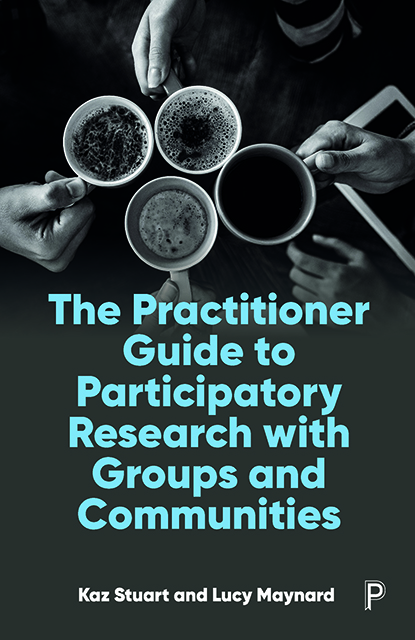Book contents
- Frontmatter
- Contents
- List of Figures and Tables
- Glossary
- About the Authors
- Acknowledgements
- Foreword
- Foreword
- Introduction
- 1 Just What is Participatory Research?
- 2 How do We Begin to Plan Our Participatory Research Project?
- 3 What Do We Want to Explore and Why?
- 4 What Ideas are the Foundations of Our Research?
- 5 How Will We go About Exploring Our Questions?
- 6 Who Can Get Involved to Explore Our Questions?
- 7 How Shall We Collect Our Data?
- 8 What Do We Do With Our Data?
- 9 How Do We Get Our Messages Out There?
- 10 How Do We Keep Everyone Safe?
- 11 Doing and Reviewing Participatory Research
- Conclusion
- References
- Index
9 - How Do We Get Our Messages Out There?
Published online by Cambridge University Press: 21 June 2023
- Frontmatter
- Contents
- List of Figures and Tables
- Glossary
- About the Authors
- Acknowledgements
- Foreword
- Foreword
- Introduction
- 1 Just What is Participatory Research?
- 2 How do We Begin to Plan Our Participatory Research Project?
- 3 What Do We Want to Explore and Why?
- 4 What Ideas are the Foundations of Our Research?
- 5 How Will We go About Exploring Our Questions?
- 6 Who Can Get Involved to Explore Our Questions?
- 7 How Shall We Collect Our Data?
- 8 What Do We Do With Our Data?
- 9 How Do We Get Our Messages Out There?
- 10 How Do We Keep Everyone Safe?
- 11 Doing and Reviewing Participatory Research
- Conclusion
- References
- Index
Summary
Chapter overview
This chapter will support you to identify the audience for your research, clarify the message you want them to hear and work out which kind of output they will be the most attentive to and how to get it to them. After working through these four processes you will have a dissemination strategy ready to roll out.
Who is your research audience?
So just who do you want to see, hear, use or learn from your research? The answer to this will largely depend on your research aim and you might have already thought this through – in fact, it’s often a good idea to start with this in mind. If you have not identified an audience, then now is the time. Look back at your aim and work out who you want to share your research with in order to achieve that aim.
There is a huge range of potential audiences for your research and you might want to go back to your stakeholder map to see who you have already identified as interested and powerful in relation to your research. Figure 9.1 below might help you to identify further people who are important in your research.
Going back to our case studies:
The students in group A wanted their school leaders to hear their research findings. Their fellow students were important stakeholders, but they were focused on influencing and making changes in school policy and so school leaders were their target audience.
The parents in group B wanted police and policymakers to hear their messages in order to achieve citywide change. If it was not possible to influence the police and policymakers themselves, they wanted as many people in the community to hear about the research so they might also apply pressure for change, so the general public were a potential audience.
The practitioners in group C wanted their individual and collective teams to hear the messages from the research as it progressed and once all the data had been collected so that they could all make changes to their practice – they were their own audience.
- Type
- Chapter
- Information
- Publisher: Bristol University PressPrint publication year: 2022



